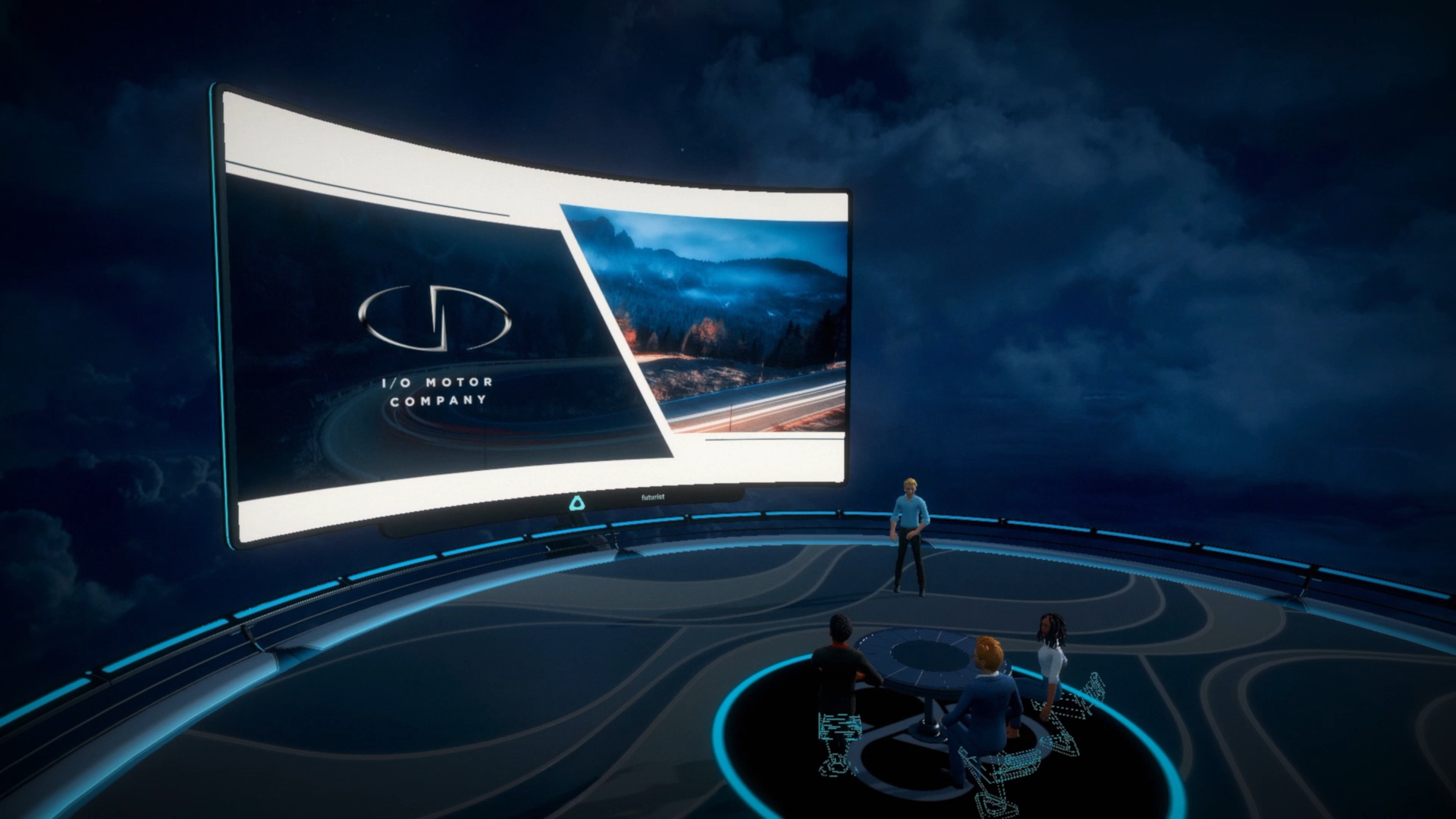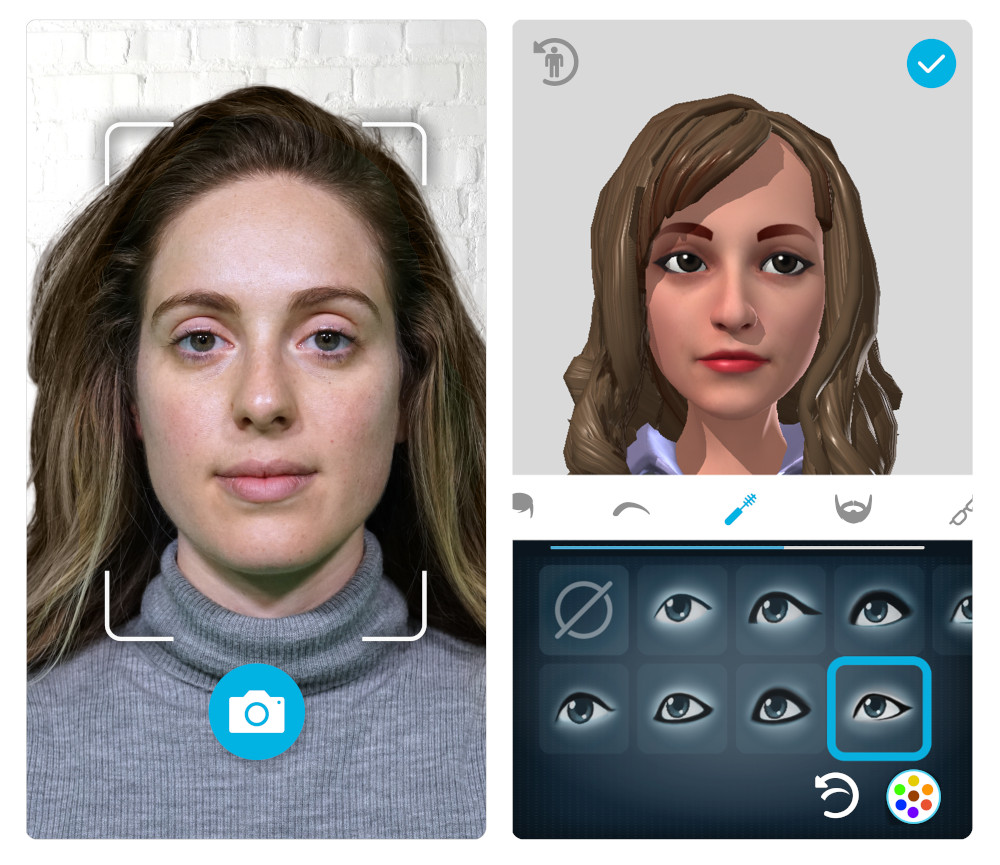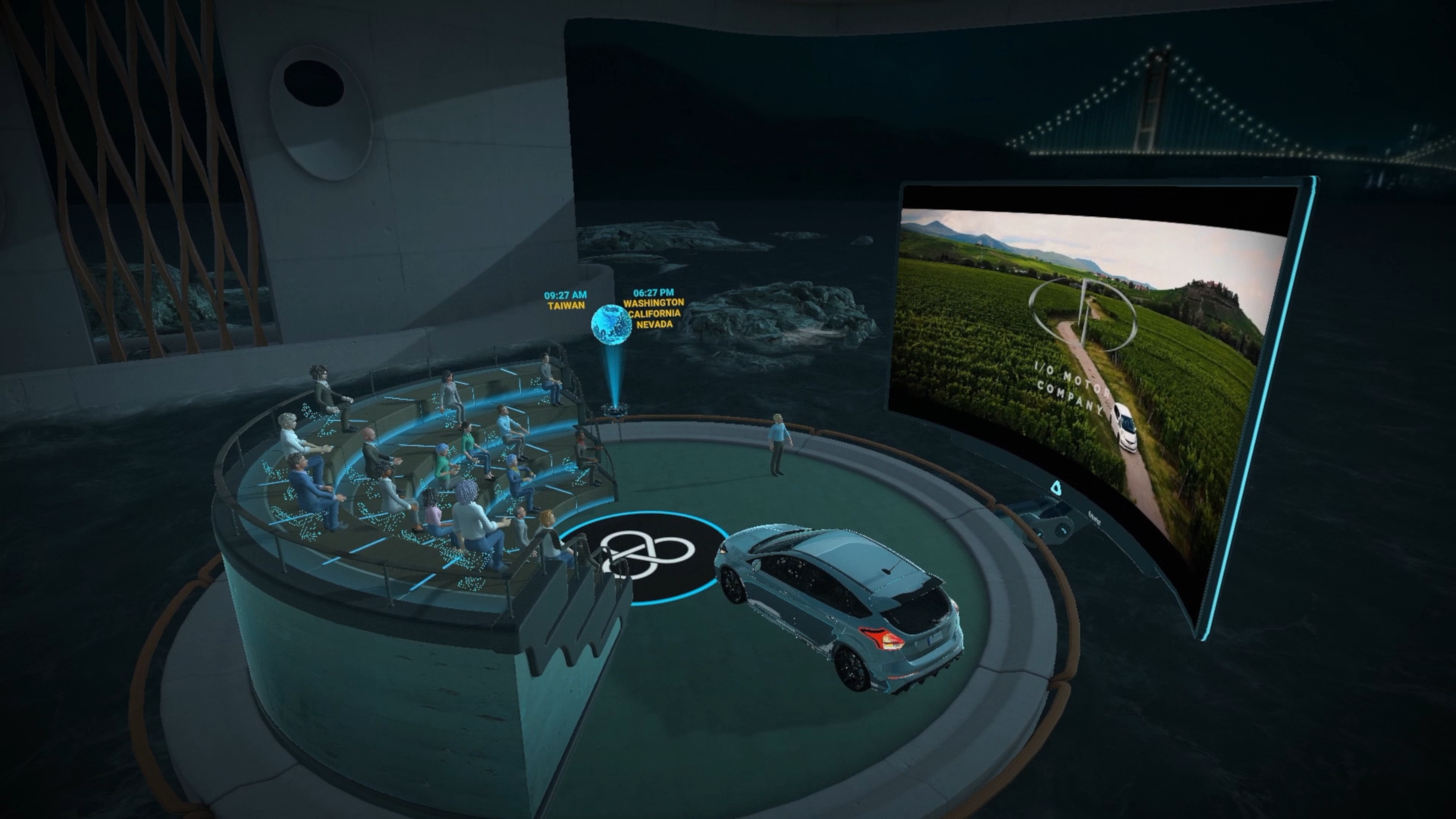Earlier this year, HTC launched the public beta for a virtual reality (VR) video conferencing platform called Vive Sync.
It’s similar in many ways to Zoom and Microsoft Teams, both of which have become mainstays of working life during the pandemic, but with one key difference - Sync meetings quite literally have an extra dimension.
The Taiwanese company - maker of the popular HTC Vive range of VR headsets - invited TechRadar Pro to sample the Vive Sync experience, hosted by President and GM EMEA Graham Wheeler.
- Here's our list of the best video conferencing software around
- We've built a list of the best productivity software right now
- Check out our list of the best collaboration tools available
Less than an hour inside the headset was enough to show us precisely why HTC is so enthusiastic about the fledgling service and its place in the future of work.
The platform remains in beta, so is naturally lacking in polish in some areas, but we didn’t need bells and whistles to grasp the core concept: with virtual reality, remote working need not feel quite so remote.

What is Vive Sync?
Vive Sync is HTC’s first foray into the world of collaboration tools, although TechRadar Pro can confirm it won’t be the company’s last.
Sync has all the same features as a regular video conferencing service, but eschews the traditional grid of faces in favor of a three dimensional arena, where attendees are joined by the avatars of up to 30 fellow participants.
You can move about the generous space, turn your body and head to listen directly to whomever is speaking and also gesticulate with your arms, which are tracked by hand controllers.
Wheeler was even sporting additional peripherals that tracked his eye and mouth movement, which further added to the sense that we were having a genuine person-to-person interaction.
Crucially, Vive Sync is cross-platform service (unlike many virtual reality tools), meaning attendees can join via their PC or laptop too - just with limited functionality.
This will be the key to making virtual reality ubiquitous in enterprise. Of course not every business will have the depth of resources to arm all employees with VR equipment, but the cross-platform nature of Vive Sync means that’s not an insurmountable problem.
According to Wheeler, the arrival of the platform has coincided happily with a fundamental shift in the world of work, brought about by the pandemic.
“VR gives teams the flexibility to work successfully from anywhere in the world - an advancement that is prompting companies to rethink the way they operate,” he said.
“Before the pandemic, a lot of organizations were against working from home, but now business culture as a whole is changing and organizations are finally open to new ideas.”
Setting up and launching in
We joined our Sync meeting using the Vive Pro, HTCs premium enterprise-focused headset, which delivers the greatest performance available, but is also on the expensive side and requires a little more setup than some other headsets.
Our reviewer described it as “the best VR headset for the ultra-discerning, financially well-off VR enthusiast,” which rather hits the nail on the head.
Anyone that has ever rigged a tethered virtual reality system like this one will know it involves at least a measure of faff. You have to get the headset out, connect the various cables with both your PC and the headset, turn on the lighthouses (which track your position in the room), load up the application etc.
For some remote workers (especially those living in small city apartments), space will prove prohibitive, because you need at least a spare 2 x 1.5 meters spare for room-scale VR. Others might argue that the effort it takes to set up outweighs the benefits of joining a meeting in virtual reality.
The alternative, for anyone that falls into the above categories, would be to opt for the all-in-one Vive Cosmos, which at least handles its own tracking (although still needs to be connected to a PC) or, even better, the totally untethered Vive Focus Plus.

Before you join a meeting, you’ll also need to create and synchronize your avatar, which currently feels more convoluted than it needs to be.
You’ll need to download HTC’s standalone avatar builder mobile app, take a selfie to use as the basis for your character and then then fine-tune by tweaking various parameters - be that eyebrow bushiness, nose sharpness or eye bulginess.
Once you’re happy with your creation, the app will provide you with a code, which you then need to attach to your account via the Vive Sync website.
We’d like to see this whole process streamlined and shifted into the virtual reality application in future builds. There’s no reason you shouldn’t be able to create your avatar inside the headset.
Once set-up and avatar creation has been taken care of, however, joining a Vive Sync meeting is as easy as on any other platform. All you need is a room code and password.
Collaborating in virtual reality
In terms of core functionality, Vive Sync delivers everything you might expect from a video conferencing or collaboration software - perhaps with the exception of text chat. Participants can communicate over mic, record sessions, pull in documents and presentations, take screenshots, share their PC screen and more.
Where Vive Sync differs from traditional conferencing platforms, though, is in its use of three dimensional space.
Attendees can sit or stand as they please (though we recommend coming armed with a swivel chair), which could help break up a long day of sitting down at a desk. They can also move across the meeting space, either by physically walking around or via teleportation - a common method of locomotion in VR.
Presenters can also import 3D assets into the meeting room, which can be manipulated, annotated and resized on the fly. In our meeting, for example, Wheeler pulled up a model of a phone, circling different elements of the design with a virtual pen as he spoke and rotating the model to inspect each side.

If an attendee likes what they see, Sync also offers the ability to react with an animated emoji (to save interrupting verbally) - or even high five the presenter, triggering fireworks.
The most striking feature, however, is the floor-to-ceiling cinema screen that rises dramatically at the front of the conference arena when a participant shares a web page, document or presentation.
The ability to share your screen is not incredible in itself, but screen-sharing on a display of these proportions certainly is. Even the most dry and incomprehensible graph or pie-chart is made more compelling when blown up to this scale - and that isn’t possible without virtual reality.
The main issue we foresee, in terms of functionality, is with taking efficient notes during a Sync meeting. While you have the option to record a meeting and watch back afterwards, that’s not exactly an efficient way to spend your working hours and defeats the object somewhat.
The closest feature to a physical notebook and pen is Sync’s voice-to-text audio note facility, which allows users to take both private and public notes mid-meeting. But doing so while continuing to listen to the presenter is near enough impossible.
Work in progress
While we had a great time with Sync overall, that’s not to say it doesn’t suffer from any issues - some of which, in fairness, can be attributed to the fact the service remains in beta.
Firstly, the current iteration of the PC application is temperamental. It was slow to launch and even slower to log us into our account, sometimes even demanding a restart.
We also experienced a slight audio delay (of roughly one or two seconds) during the meeting itself, which made jumping in on the conversation somewhat awkward and served as an unwelcome reminder that the meeting wasn’t actually in-person.
Our voice also dropped out at one point, forcing us to communicate with Wheeler using emojis alone, until the issue was resolved by exiting and reentering the meeting.
If Vive Sync is to carve out a space for itself in the highly competitive video conferencing market, it will need to get these kinds of fundamentals right first.

However, Wheeler is as equally unconcerned about the skeptics and dissenters as he is convinced of the merits of VR in the workplace. Asked what he thought of the idea that platforms like Sync represent a dystopian future for work, he had the following to say:
“Every new technology is met with some element of negativity. Some people railed against the printing press.”
“Technology has always just been a conduit - it has no conscience. Society as a whole has a collective responsibility to use technology for good, to make lives easier and bring us closer together.”
Vive Sync, Wheeler told TechRadar Pro, will remain in beta for the time being while the team continues to deliver regular new updates and fine tune the experience.
He was tight-lipped about when the service might launch in full, but we’ll be back with a full review whenever that may be.
- Here's our list of the best virtual reality headsets for businesses
from TechRadar - All the latest technology news https://ift.tt/33oECfF
via IFTTT


0 التعليقات: